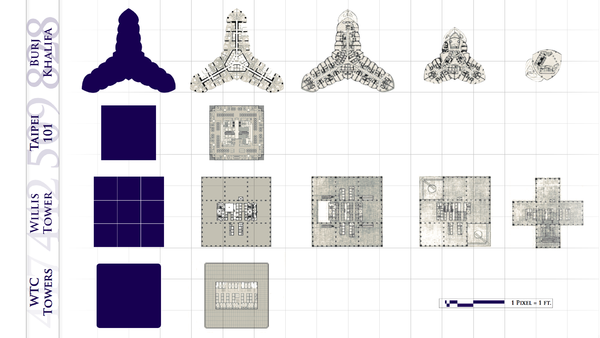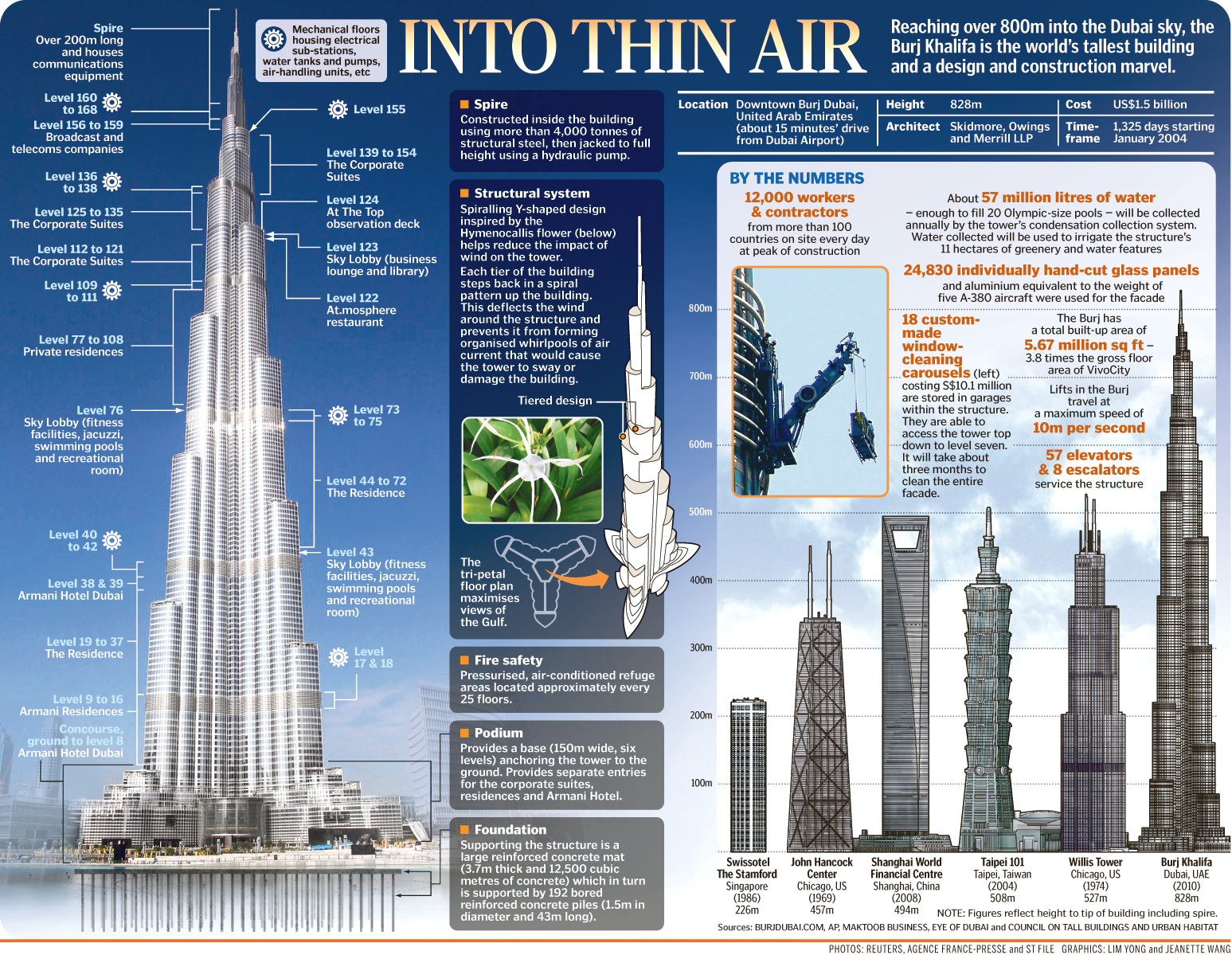Envisioned as a model of architectural prowess and science, the Burj Khalifa is a staggeringly bold statement to the world – of power, wealth, status and most importantly, design. Construction for the Burj began in January 2004 and the building was finally completed only in 2010.
Being the world’s tallest building (828 metres) and the man-made wonder it is, the building holds a number of records such as being the tallest free standing structure in the world and having the highest outdoor observation deck in the world, to name just a few. Which is why creating an infographic about what is arguably the world’s most information-heavy building is no easy task.
Looking at the tightly packed Burj Khalifa infographic, your eye is easily distracted with the numerous boxes peppered with facts and figures about the building. Though overwhelming at first, what I like about the infographic is that it is able to squeeze a whole bunch of details into it, like the design layout, the floor structure and a comparison with the other tall buildings of the world. Apart from this, the piece includes randomly useful and fun details like the fact that the Burj Khalifa lift travels at a speed of 10m per second and during the time of construction, it employed 12,000 workers and contractors from across a hundred countries.
Roughly demarcated into three sections with the help of the varying colours, the infographic from newspagedesigner.org first deals with the storey layout of the building on the extreme left corner of the visual. The simple design helps a viewer understand the multiple layers of the building, right from the Armani Hotel from the ground level onwards, to private residences above. As your eye traverses the length of the tower, it is revealed that the building houses a number of residences, corporate suites and broadcast/telecom companies.
The next/ middle section of the graphic is dedicated to the actual architectural design. An interesting fact about the building (its spiraling Y shaped design is inspired by the Hymenocallis flower) is revealed. The flower inspired design helps protect the building against strong winds- thus making it resistant to any kind of damage that could be caused by whirlpool like winds at those heights. Other useful bits like information about fire safety and foundation facts are highlighted in this section as well.
The last and possibly the most interesting section (to me, at least) is the extreme right corner with arbitrary numeric details about the Burj. 24,830 individually hand cut panels were used for the façade, 57 million litres of water is collected annually by the buildings condensation system, 57 elevators and eight escalators service the entire structure and eighteen window cleaning carousels sanitise the exterior of the building- this roughly takes about three months to do in its entirety. Phew!
Overall, the inforgraphic provides a detailed description of the marvel that is the Burj Khalifa, and staying true to its purpose, is able to achieve the same result as the building itself. Awe.


